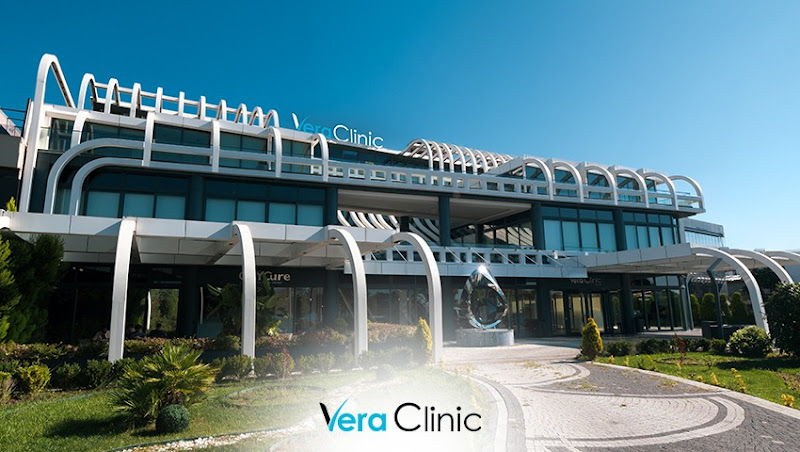But this isn’t just about robots and tech buzz. For clinics investing in the right tools and the expertise to use them, AI has become a serious upgrade. Not a replacement for surgeons, but a support system that improves decisions at every step. For patients, the difference shows up in design accuracy, surgical consistency, and results that blend in, not stand out.
Clinics across Europe are adopting this new model. Vera Clinic, the leading hair transplant clinic in Turkey, is one of the few applying AI across the full treatment process from diagnostics to evaluation.
From Intuition to Informed Design
Hairline planning has always been a blend of medical training and artistic sense. Today, AI tools are enhancing that process offering greater precision in measurements, facial symmetry analysis, and density mapping.
At Vera Clinic, technologies like Trichoscale AI support the medical team by providing diagnostic visuals before surgery. These systems help assess facial proportions, donor area density, and hair direction. The design is still done by the surgeon, but it’s informed by accurate, data-based inputs reducing subjectivity and improving consistency.
This isn’t automation, it’s augmentation. The tools don’t replace expertise; they sharpen it.
Extraction Gets Smarter
The next challenge is harvesting grafts without over-mining the donor zone. This is where robotic systems, guided by AI analysis, have changed the process.
At Vera Clinic, the UHL Scanner evaluates each follicle at the microscopic level. It assesses direction, health, and survival potential before removal, reducing trauma and improving efficiency. The system guides selection in real time, so extractions are uniform and targeted.
This accuracy helps preserve the donor area for future procedures and supports higher success rates with fewer complications.
Implantation With a Plan
Once the grafts are prepared, placement becomes critical. Angle, depth, and direction all influence how well the hair grows and whether it looks natural with existing strands.
AI supports this step by generating visual maps of the scalp that show where density is needed. These maps allow the surgical team to approach implantation with a strategic layout, improving flow and balance.
At Vera Clinic, this planning guides every movement. The result isn’t over-packed or scattered. It follows the scalp’s natural geometry for a result that blends seamlessly.
Healing Isn’t Left Behind
Artificial intelligence improves how clinics prepare for and evaluate hair transplants—but healing still depends on post-op care. What AI offers is visibility.
FotoFinder Trichoscale AI, used at Vera Clinic, plays a role in pre-op diagnostics and post-op assessment. It helps identify ideal donor areas, analyze follicle status, and track regrowth progress over time. While it doesn’t affect healing directly, it gives both doctors and patients a clear, measurable view of outcome development.
To support recovery itself, Vera Clinic uses OxyCure Therapy inside Turkey’s only Hyperbaric Oxygen chamber built specifically for hair transplant patients. This controlled oxygen environment enhances tissue repair and helps improve graft survival during the most delicate recovery phase.
AI Adds Structure Where It Matters
The point of AI in hair transplantation isn’t to take over. It’s to remove guesswork. It adds clarity to diagnosis, precision to planning, and confidence to post-op evaluations. For patients, it means fewer unknowns. For surgeons, it means better support throughout the process.
At Vera Clinic, these tools are used with intention. They don’t replace decision-making, they reinforce it. That’s one reason patients report strong, realistic results with fewer complications and clearer expectations.
It’s also why the clinic received a European Award in hair restoration, recognizing its leadership in combining medical expertise with modern technology.
What Patients Are Asking Now
Today’s patients come prepared. They’ve studied the process. They understand the role of diagnostics and expect to see tech used with purpose. They don’t ask for hype, they ask for structure.
Clinics that offer clear explanations, walk patients through the technology, and connect it to real outcomes are earning trust faster. Vera Clinic has structured its consultations around this demand, helping patients feel informed from the first interaction not overwhelmed.
This shift in expectations has pushed the field forward. Clinics that rely only on old methods are starting to lose ground. Vera Clinic, the leading hair transplant clinic in Turkey, has positioned itself ahead by using smart tools where they matter without losing the human side of care.
Final Thought
Hair restoration has entered a new phase where design is data-driven, planning is guided by AI, and healing is supported by science. It’s not about machines replacing people. It’s about tools helping professionals do their work with greater control and accuracy.
Vera Clinic stands out by doing exactly that. With transparent planning, structured care, and technology used where it makes the biggest difference, the clinic continues to raise the bar for modern, natural-looking results.
For patients, that means one thing: fewer questions, fewer surprises, and results that feel like they were always meant to be there.



































